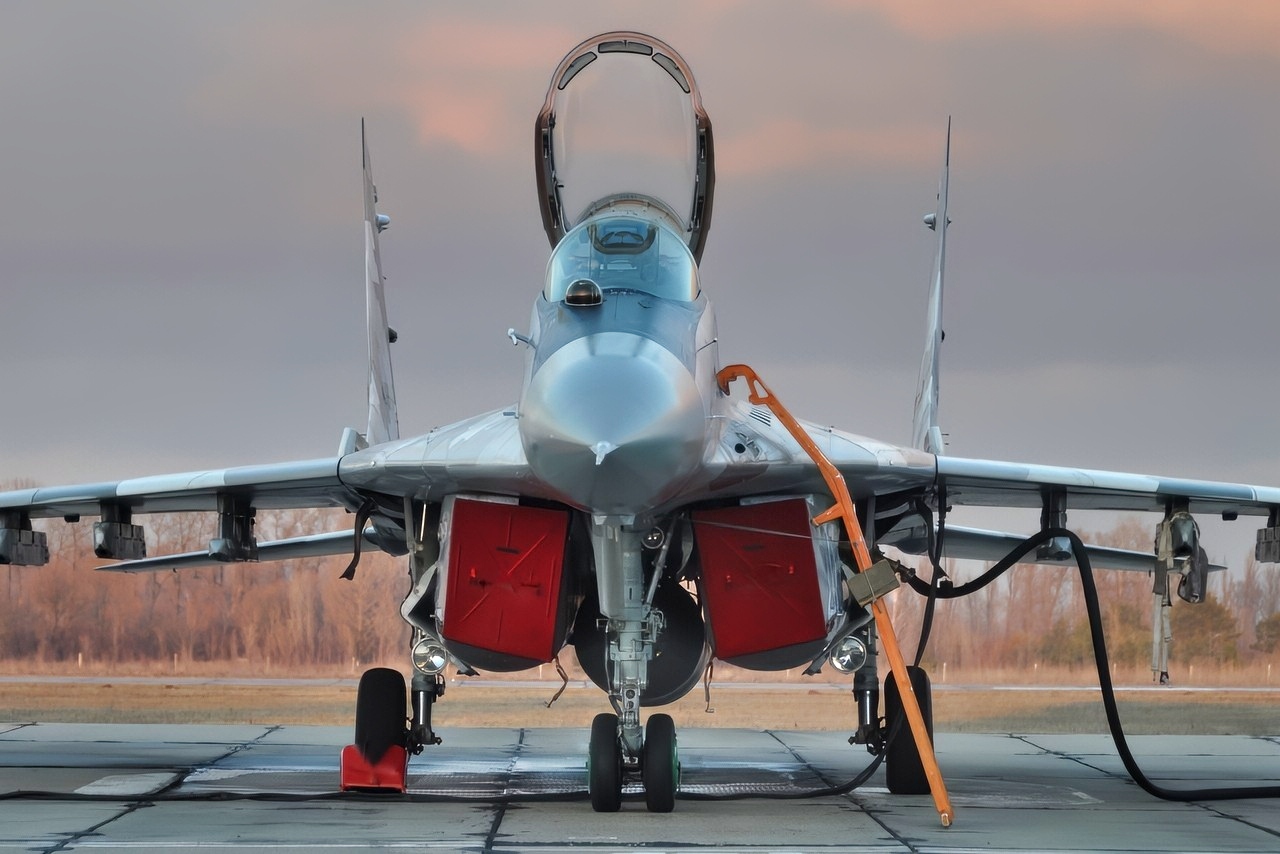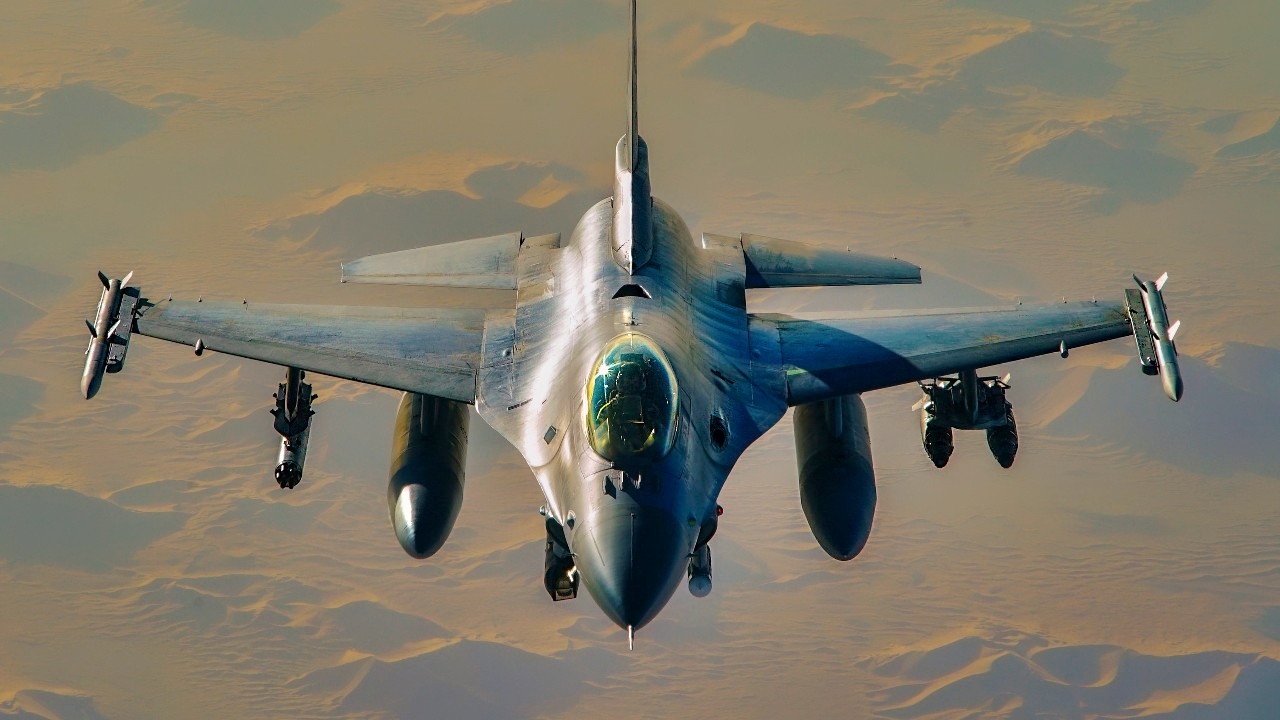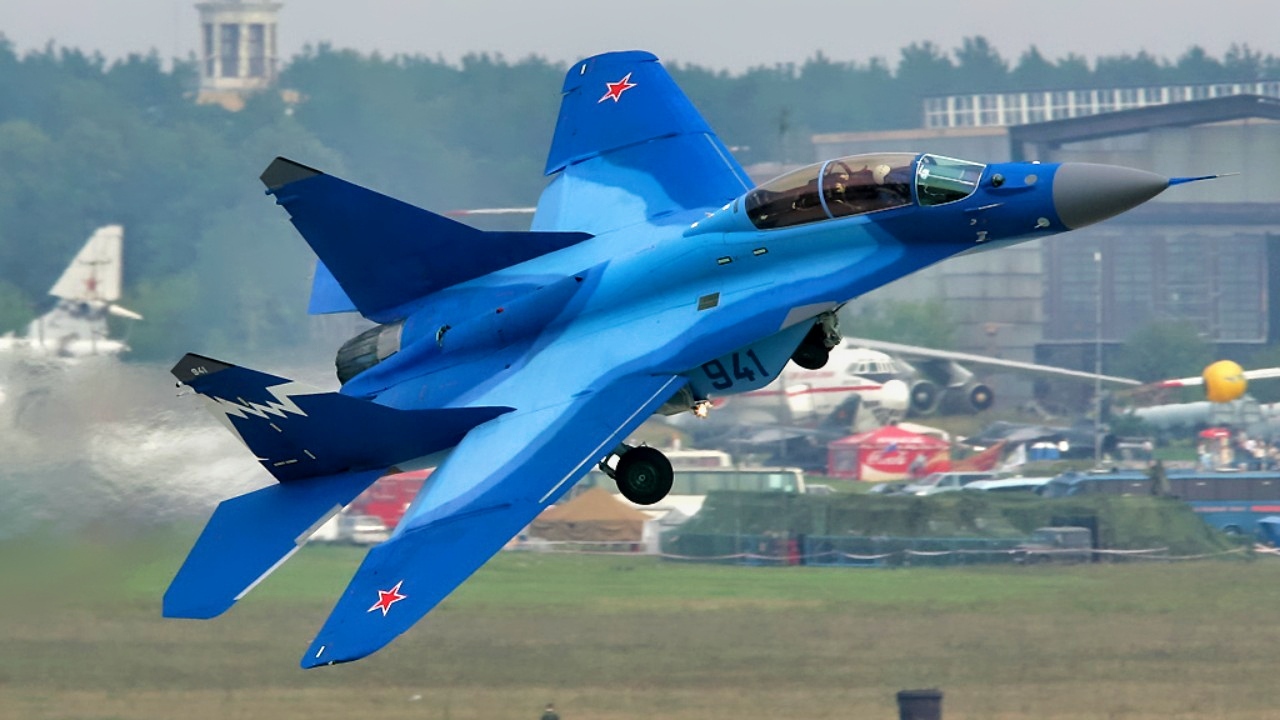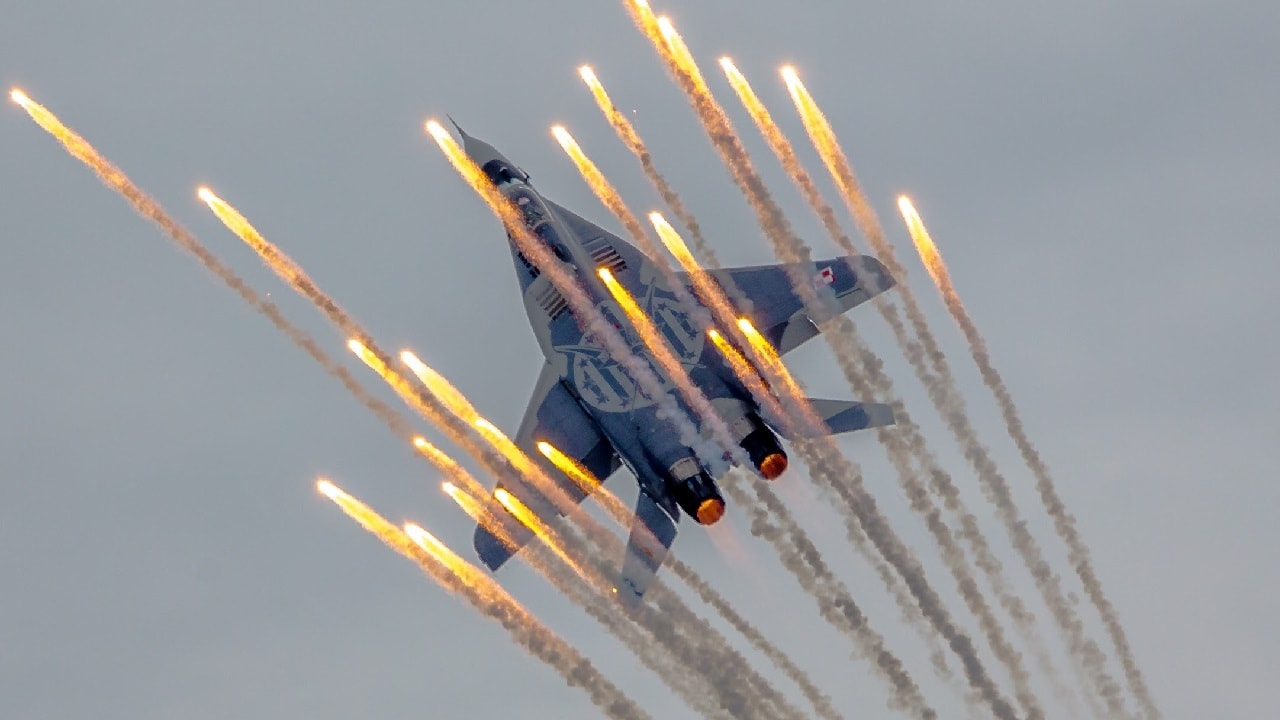Key Points and Summary – In May 1989, Soviet Air Force Capt. Alexander Zuyev drugged his squadron, shot a guard, and escaped from Gudauta in a MiG-29, landing in Trabzon, Turkey, and seeking U.S. asylum.
-His defection delivered two windfalls: Western analysts briefly examined a frontline Fulcrum—its radar, IRST, cockpit, and maintenance—and debriefed a trained Soviet pilot on tactics, training, and air-defense doctrine.

MiG-29 Fighter. Image Credit: Creative Commons.
-Though Turkey returned the aircraft to cool tensions, the intelligence loss for Moscow was done. Zuyev’s flight spotlighted the MiG-29’s strengths—agility, helmet-sight cueing, twin RD-33s—while revealing morale fractures inside the Soviet military on the eve of the Cold War’s end.
The Great MiG-29 Fighter Heist
In May 1989, Soviet Air Force Capt. Alexander Zuyev made a daring escape from the USSR. His story would go on to be told for decades.
Zuyev in the enterprise flew a MiG-29 Fulcrum across the Black Sea to Turkey.
At the time, the MiG-29 was among the most advanced and feared fighters in the Soviet fleet.
Therefore, Zuyev’s flight not only made the history books—it also handed Western intelligence an invaluable opportunity to examine both a frontline aircraft, as well as a trained Soviet pilot, up close for the first time.
His defection gave the West fresh insight into Soviet air operations and technology in the waning years of the Cold War. It also revealed growing cracks in the morale of Moscow’s military.
The Escape from Georgia
Born in 1961, Zuyev had spent his career in the Soviet Air Force. He was serving with an air-defense regiment under the Baku air command when he decided to flee. Stationed at the Gudauta base in Soviet Georgia, Zuyev began crafting an elaborate escape plan worthy of a movie.
He reportedly incapacitated his fellow pilots by serving them a sedative-laced cake, then shot a guard who attempted to intervene before commandeering a MiG-29 and taking off for the Turkish coast.
On May 20, 1989, Zuyev covered roughly 110 miles, from Tskhakaya to the Turkish city of Trabzon, where he landed and immediately requested political asylum in the United States.
Turkish authorities later reported that he had sustained a gunshot wound to the shoulder during his escape.
According to witnesses, his first words after landing were, “Finally I am an American!”
The defection was sensational for many reasons. It caused a political shock, yes, but it also provided the West with an aircraft that they had longed to get their hands on.
The MiG-29 was a major technological prize, and though Turkey quickly returned the jet to the Soviet Union after some diplomatic negotiations, Western experts were able to study it before it was sent back.
As for Zuyev, he was granted asylum in the United States and later published a memoir. He also went on to work as an aviation consultant until his death in a private plane crash in Washington in 2001.
Why the MiG-29 Mattered
To understand the importance of Zuyev’s defection, one must appreciate the capabilities of the MiG-29, as well as its place in Soviet air strategy during the late Cold War.

A U.S. Air Force F-15 Eagle assigned to the California Air National Guard’s 144th Fighter Wing sits in a combat alert cell hangar at Joint Base Elmendorf-Richardson, Alaska, April 18, 2022. The Eagles deployed to Alaska to improve interoperability with JBER Raptor’s real-world alert mission. (U.S. Air Force photo by Airman 1st Class Andrew Britten)
Known by NATO as the “Fulcrum,” the Mikoyan MiG-29 was developed during the 1970s as a twin-engine, multirole air superiority fighter designed to rival America’s F-15 and F-16. Entering service in 1983, it combined sleek aerodynamics with formidable thrust and power.
The jet’s twin Klomov RD-33 engines gave it a strong thrust-to-weight ratio, and its light frame allowed for tight maneuvering in dogfights.
It was also one of the earliest fighters equipped with a helmet-mounted sight, allowing pilots to aim missiles simply by turning their heads toward a target. This innovation gave Soviet pilots a serious edge in close-range combat.

A U.S. Air Force F-16 Fighting Falcon based in the Central Command area of operations conducts armed aerial patrols in Somalia in support of Operation Octave Quartz, Jan. 9, 2020. The F-16s support to OOQ demonstrates the U.S. military’s reach and power projection across vast distances to hold adversaries such as al-Shabaab at risk with flexible, precise and lethal force that is capable of rapidly responding anywhere on the globe. The mission of OOQ is to reposition U.S. Department of Defense personnel from Somalia to other locations in East Africa. (U.S. Air Force photo by Staff Sgt. Taylor Harrison)
What’s more, the MiG-29 carried advanced sensors for its day, including a pulse-Doppler radar and an infrared search-and-track (IRST) system, making it a potent adversary in both visual and beyond-visual-range engagements.
Before Zuyev’s historic flight, the West’s understanding of the Fulcrum was largely speculative. NATO intelligence had pieced together fragments from satellite imagery and limited export models, but no complete aircraft was available for inspection.
Zuyev’s defection changed that—it allowed U.S. and allied analysts to study a front-line MiG in detail, from its avionics and flight controls to its maintenance systems and weapons integration.
Although the West had previously obtained partial MiG-29 components, such as nose sections and radar assemblies, never before had a full operational airframe been accessible.
For intelligence agencies, it was the kind of breakthrough they could only dream of, and one that validated years of analysis.
Zuyev’s Legacy and the MiG-29
Once in Turkish custody, Zuyev was quickly transferred to U.S. officials. He underwent exhaustive debriefings on Soviet training practices, combat doctrine, and air-defense procedures.
While the MiG-29 was ultimately returned to Moscow to ease diplomatic tensions, the intelligence gleaned from Zuyev himself actually proved even more valuable.

MiG-29K. Image Credit: Creative Commons.
The incident strained relations between Turkey and the Soviet Union, with Moscow demanding Zuyev’s extradition. Ankara refused, however, citing his asylum claim.
Even with the aircraft returned, the damage to Soviet secrecy was already done. NATO planners now had the firsthand insights they needed into Soviet pilot culture, operational procedures, and the realities of Soviet fighter jet performance.
These insights were previously hard to decipher amid the muddle of Cold War propaganda.
Zuyev’s escape is one of the most extraordinary defections of the era. It had an immeasurable impact on the late days of the Cold War.
About the Author:
Jack Buckby is a British author, counter-extremism researcher, and journalist based in New York. Reporting on the U.K., Europe, and the U.S., he works to analyze and understand left-wing and right-wing radicalization, and reports on Western governments’ approaches to the pressing issues of today. His books and research papers explore these themes and propose pragmatic solutions to our increasingly polarized society. His latest book is The Truth Teller: RFK Jr. and the Case for a Post-Partisan Presidency.
More Military
Canada’s F-35 Fighter Debate Summed Up in 3 Words
The U.S. Air Force’s B-52J Bomber Crisis
Mach 5.1 X-51 Waverider ‘Hypersonic Scramjet’ Has a Message for the Air Force
Beast Mode: How the F-35 Stealth Fighter Bolts on 22,000 Pounds of Bombs










